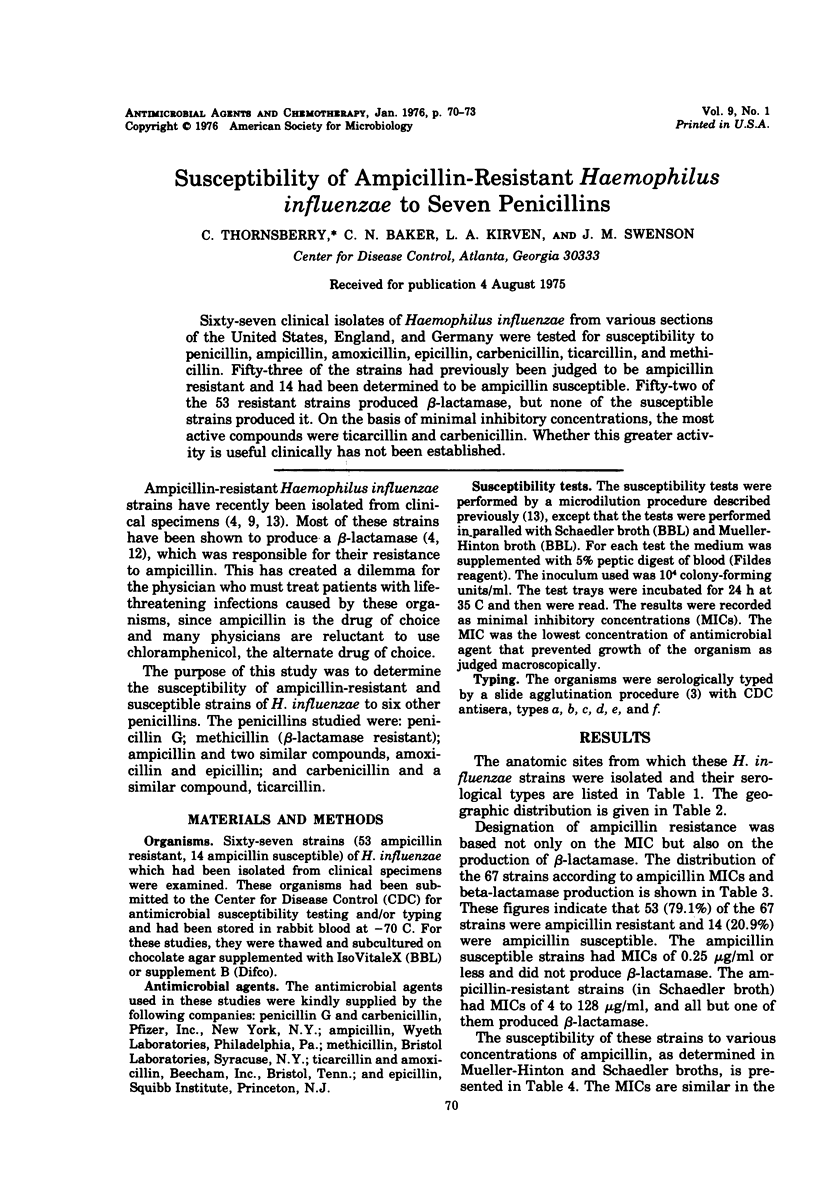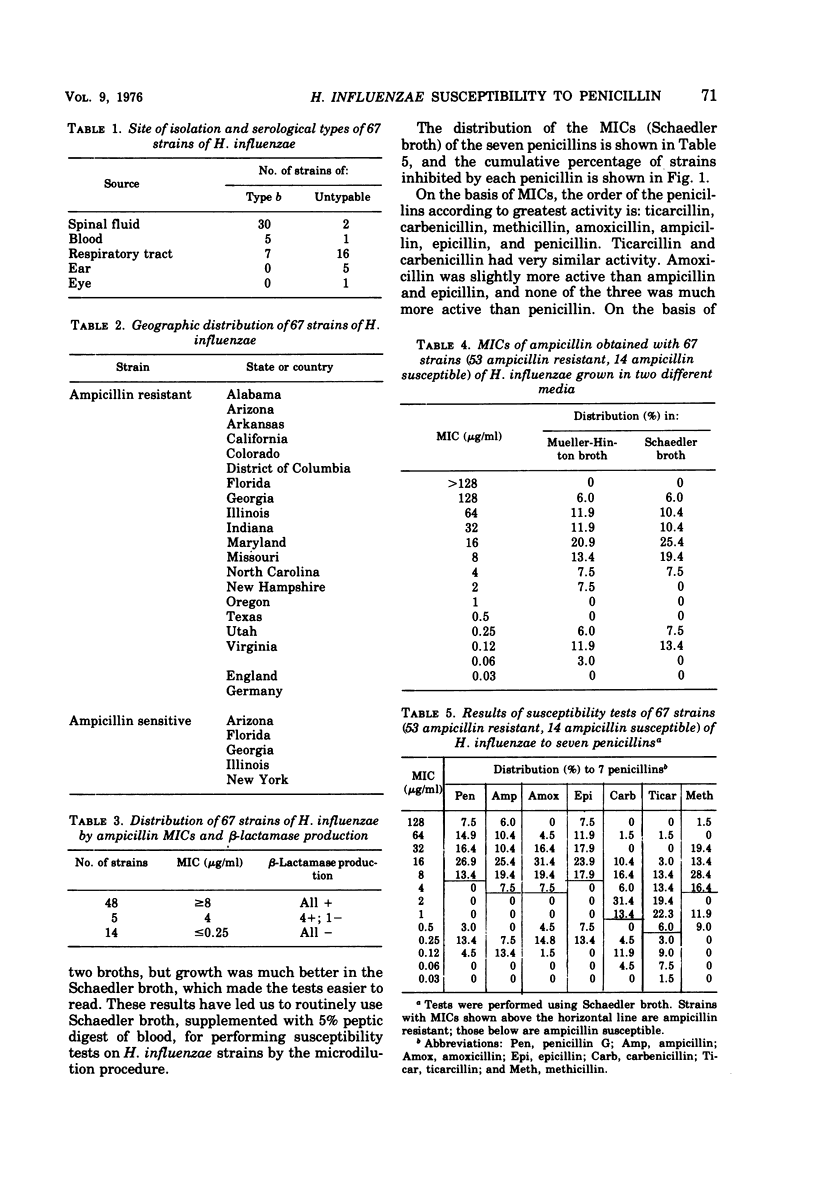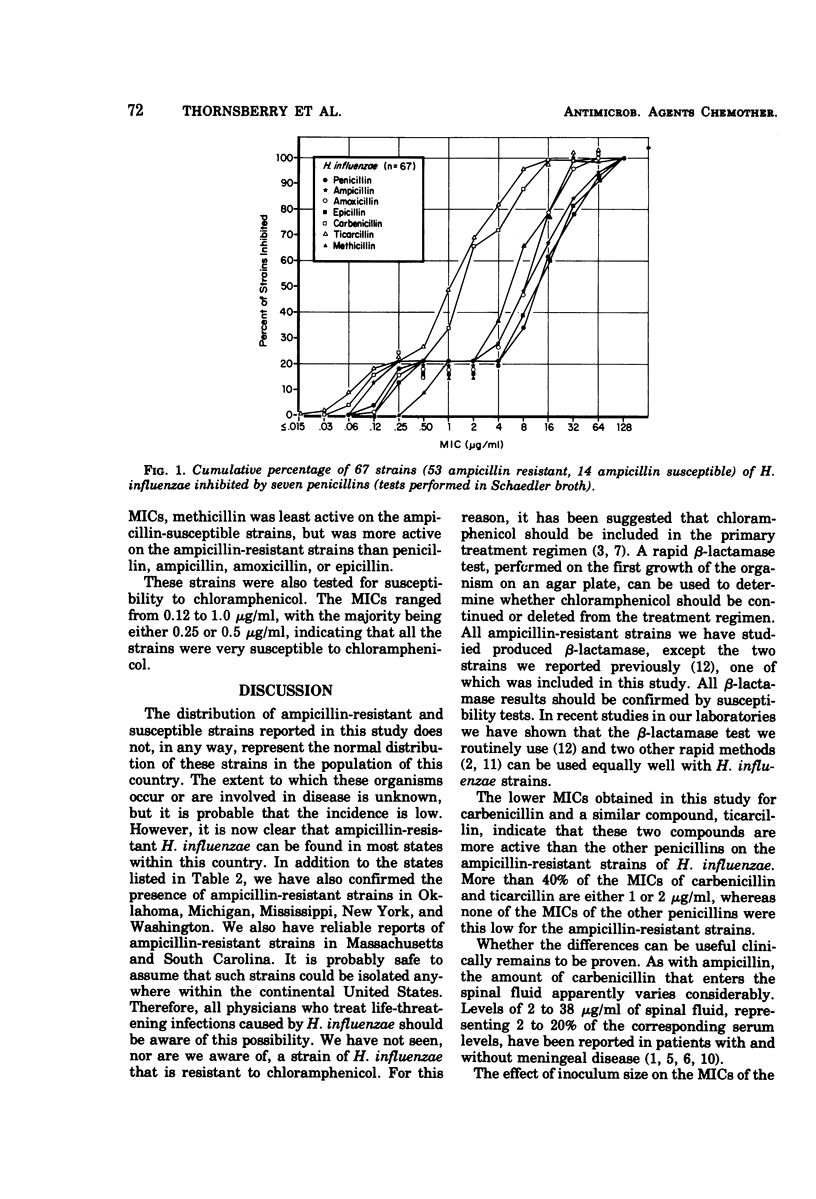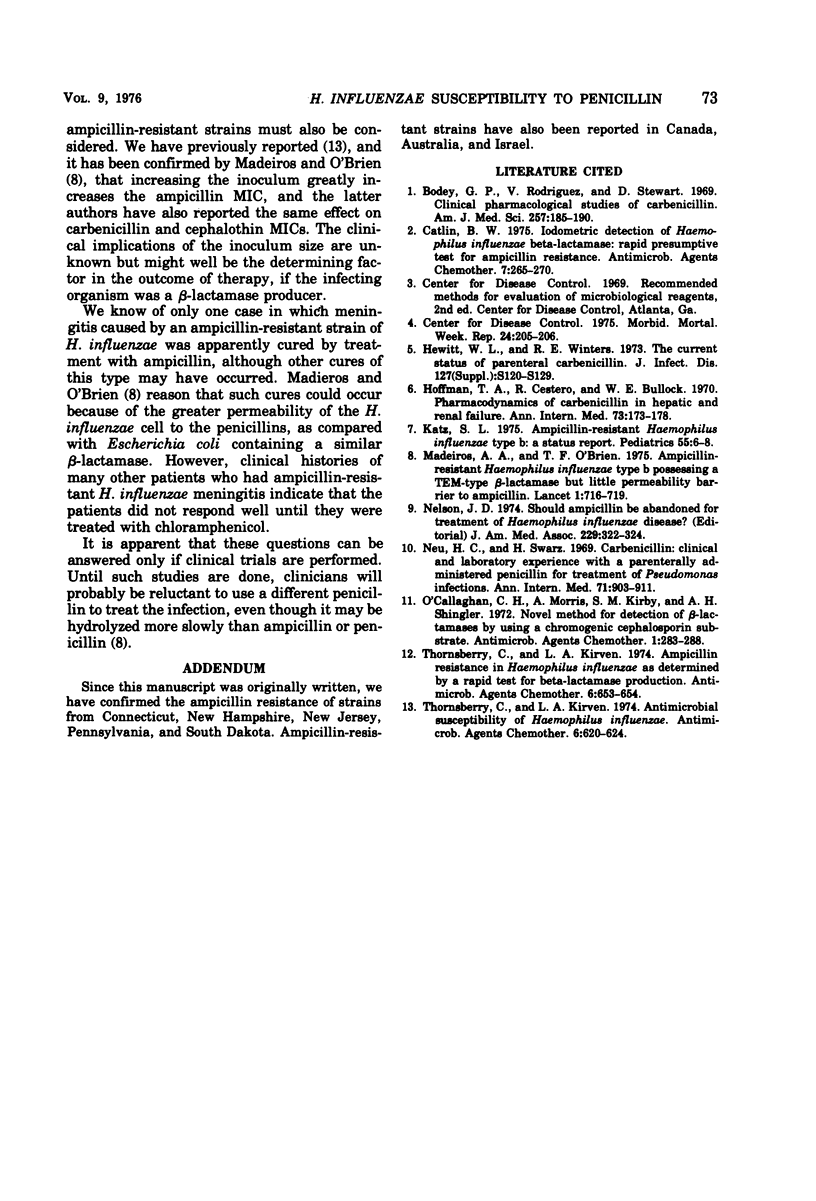Abstract
Sixty-seven clinical isolates of Haemophilus influenzae from various sections of the United States, England, and Germany were tested for susceptibility to penicillin, ampicillin, amoxicillin, epicillin, carbenicillin, ticarcillin, and methicillin. Fifty-three of the strains had previously been judged to be ampicillin resistant and 14 had been determined to be ampicillin susceptible. Fifty-two of the 53 resistant strains produced β-lactamase, but none of the susceptible strains produced it. On the basis of minimal inhibitory concentrations, the most active compounds were ticarcillin and carbenicillin. Whether this greater activity is useful clinically has not been established.
Full text
PDF



Selected References
These references are in PubMed. This may not be the complete list of references from this article.
- Bodey G. P., Rodriguez V., Stewart D. Clinical pharmacological studies of carbenicillin. Am J Med Sci. 1969 Mar;257(3):185–190. doi: 10.1097/00000441-196903000-00005. [DOI] [PubMed] [Google Scholar]
- Catlin B. W. Iodometric detection of Haemophilus influenzae beta-lactamase: rapid presumptive test for ampicillin resistance. Antimicrob Agents Chemother. 1975 Mar;7(3):265–270. doi: 10.1128/aac.7.3.265. [DOI] [PMC free article] [PubMed] [Google Scholar]
- Hoffman T. A., Cestero R., Bullock W. E. Pharmacodynamics of carbenicillin in hepatic and renal failure. Ann Intern Med. 1970 Aug;73(2):173–178. doi: 10.7326/0003-4819-73-2-173. [DOI] [PubMed] [Google Scholar]
- Katz S. L. Ampicillin-resistant Hemophilus influenzae type b: a status report. Pediatrics. 1975 Jan;55(1):6–8. [PubMed] [Google Scholar]
- Medeiros A. A., O'Brien T. F. Ampicillin-resistant Haemophilus influenzae type B possessing a TEM-type beta-lactamase but little permeability barrier to ampicillin. Lancet. 1975 Mar 29;1(7909):716–719. doi: 10.1016/s0140-6736(75)91630-x. [DOI] [PubMed] [Google Scholar]
- Nelson J. D. Editorial: Should ampicillin be abandoned for treatment of Haemophilus influenzae disease? JAMA. 1974 Jul 15;229(3):322–324. [PubMed] [Google Scholar]
- Neu H. C., Swarz H. Carbenicillin: clinical and laboratory experience with a parenterally administered penicillin for treatment of Pseudomonas infections. Ann Intern Med. 1969 Nov;71(5):903–911. doi: 10.7326/0003-4819-71-5-903. [DOI] [PubMed] [Google Scholar]
- O'Callaghan C. H., Morris A., Kirby S. M., Shingler A. H. Novel method for detection of beta-lactamases by using a chromogenic cephalosporin substrate. Antimicrob Agents Chemother. 1972 Apr;1(4):283–288. doi: 10.1128/aac.1.4.283. [DOI] [PMC free article] [PubMed] [Google Scholar]
- Thornsberry C., Kirven L. A. Ampicillin resistance in Haemophilus influenzae as determined by a rapid test for beta-lactamase production. Antimicrob Agents Chemother. 1974 Nov;6(5):653–654. doi: 10.1128/aac.6.5.653. [DOI] [PMC free article] [PubMed] [Google Scholar]
- Thornsberry C., Kirven L. A. Antimicrobial susceptibility of Haemophilus influenzae. Antimicrob Agents Chemother. 1974 Nov;6(5):620–624. doi: 10.1128/aac.6.5.620. [DOI] [PMC free article] [PubMed] [Google Scholar]


